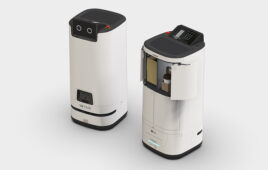|
Listen to this article
|

Researchers at the Stevens Institute of Technology used a customized BlueROV2 robot to explore a busy harbor at the U.S. Merchant Marine Academy in New York. | Source: Stevens Institute of Technology
Underwater environments can be particularly challenging for autonomous robots. Things are constantly moving and changing, and robots need to figure out where they are without relying on GPS data.
Researchers at the Stevens Institute of Technology have created a robot that is able to successfully navigate a crowded marina underwater. The robot is able to map its environment, track its own location and plan a safe route through a complex environment in real-time, simultaneously.
“Underwater mapping in an obstacle-filled environment is a very hard problem, because you don’t have the same situational awareness as with a flying or ground-based robot — and that makes sending a robot underwater an inherently risky process,” said Brendan Englot, project lead and interim director of the Stevens Institute for Artificial Intelligence.
The team was able to develop an algorithm that allowed the robot to monitor and manage its level of uncertainty about its location and environment, and make real-time decisions based on that uncertainty. The robot uses active SLAM (simultaneous localization and mapping) algorithms.
“Essentially, the robot knows what it doesn’t know, which lets it make smarter decisions,” Englot said. “By creating a virtual map that accounts for the robot’s own confidence about where it is and what it’s seeing, the robot can quickly, safely, and accurately map a new environment.”
The robot, a customized BlueROV2 robot, operates at a depth of 1 meter, and uses sonar signals to detect objects around it. The robot was able to successfully explore a harbor at the U.S. Merchant Marine Academy in King’s Point, New York.
The robot has many potential applications, including in harbor repairs, building and maintaining offshore wind farms, aquaculture projects and drilling rigs. Moving forward, Englot’s team plans to ruggedize robotics platform to allow for longer-lasting undersea missions.






Tell Us What You Think!